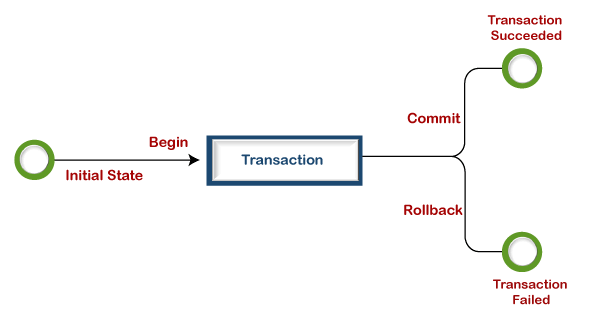Introduction to SQL Transactions
SQL transactions help manage database operations. They ensure multiple SQL statements execute as a single unit of work. This ensures data integrity.
ACID Properties
SQL transactions follow ACID properties:
- Atomicity: All operations within a transaction must complete. If not, none are applied.
- Consistency: Ensures the database remains valid before and after the transaction.
- Isolation: Transactions are processed independently at the same time.
- Durability: Once committed, transactions are permanent even in system failures.

Transaction Management
- BEGIN: Starts a transaction.
BEGIN; - COMMIT: Saves changes made during the transaction.
COMMIT; - ROLLBACK: Reverts changes made during the transaction.
ROLLBACK; - SAVEPOINT: Sets a point within a transaction to roll back to if needed.
SAVEPOINT savepoint_name;
Transaction Isolation Levels
Isolation levels control the visibility of changes made in a transaction to other concurrent transactions:
- Read Uncommitted: Allows dirty reads.
- Read Committed: Prevents dirty reads but allows non-repeatable reads.
- Repeatable Read: Prevents dirty and non-repeatable reads.
- Serializable: Ensures full isolation from other transactions.
Practical Example
BEGIN;
UPDATE accounts SET balance = balance - 100 WHERE account_id = 1;
UPDATE accounts SET balance = balance + 100 WHERE account_id = 2;
COMMIT;
In this example, money transfers from one account to another. This ensures atomicity and consistency.
Conclusion
Understanding SQL transactions is essential for maintaining data integrity and consistency in your database operations. By mastering ACID properties, transaction management commands, and isolation levels, you ensure that your data remains reliable and secure.
To further enhance your SQL skills, explore the use of SQL indexes to optimize query performance. Additionally, delve into SQL subqueries to write more efficient and complex queries. Both SQL indexes and subqueries are integral components in crafting robust and efficient databases. By combining these concepts with your knowledge of SQL transactions, you will be well-equipped to handle a variety of database challenges.


